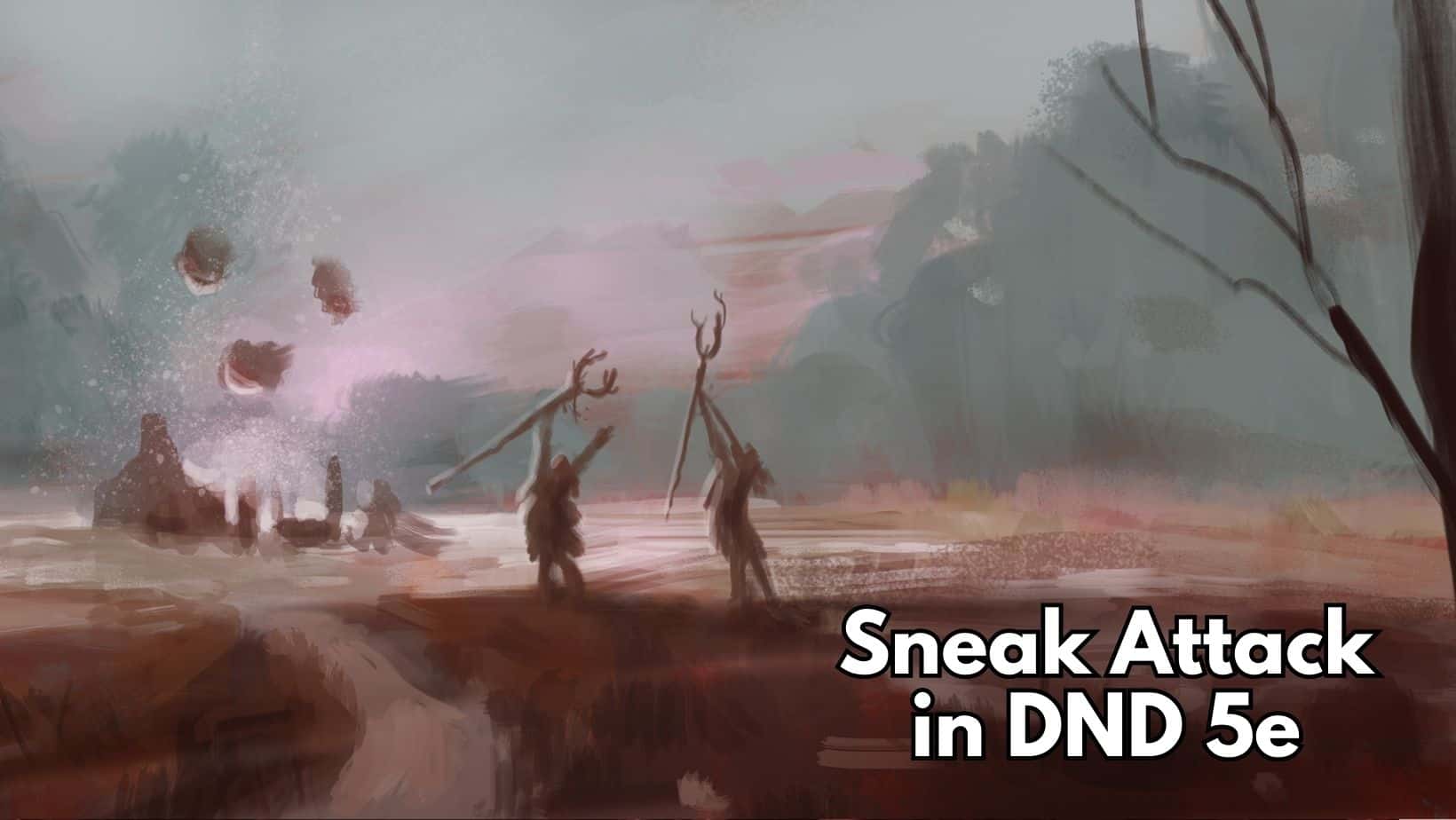Shadows danced and flickered across the stone walls of the dank dungeon. The echoing whisper of troubled spirits hinted at the lingering dread that permeated the air. A small group of intrepid adventurers stood on the precipice of an encounter with an unforeseen foe. Grimdunk, the stoic half-orc rogue of the group, stood quietly at the ready. Recognized for his brute strength and impressive stature like his kin, there was a subtle cunning to him that often slipped under the radar amidst his more recognized traits.
Unbeknownst to his armored fellows, the rogue had surreptitiously spotted a grotesque shadow lurking just beyond their torchlight. A guttural snarl and the hateful glow of red eyes gave away the creature’s position, a vile goblin chieftain bubbling with malicious intent. The element of surprise was squarely off the table, leaving the group seemingly poised on the edge of a vicious skirmish.
Yet Grimdunk, keeping his presence diminutive, smoothly navigated through the shadows towards the beast. His deft fingers drew the gleaming dagger located at his belt, its sharpened edge catching the flickering light from the dim torches. The preternatural silence that often accompanied impending violence had fallen upon the room, yet the rogue moved silently, virtually invisible in the encompassing darkness.
The moment came like a flash of lightning, sudden and electrifying. Grimdunk sprang forth, his dagger plunging into the thick hide of the goblin chieftain. The stealthy maneuver lodged the blade squarely between the creature’s ribs, landing a direct, lethal blow to its monstrous heart. The grisly leader let out a snarled gasp of surprise and disbelief as his life force was snuffed out, collapsing in a heap as death’s grip claimed him. The successful sneak attack had swiftly ended a perilous encounter in a solitary decisive blow.
As the shadowy figure of Grimdunk emerged from the gloom, dagger still gleaming menacingly, the other members of the party turned to look at him, their eyes wide with surprised respect. He had proven his cunning yet again. A rogue’s blade, delivered delicately yet lethally, in a single, precise strike. This feat of skill was all thanks to an ability that all rogues at heart, thrive on – the infamous Sneak Attack.
In the world of Dungeons & Dragons, combat can be straightforward or it can be hacked, slashed, and ruled by the clever utilization of abilities. The Sneak Attack is a defining trait of D&D’s Rogue class, a hail-Mary ability that, when used correctly, can quickly turn the tide of a battle. With a nimble rogue, strategic thinking and the choice utilization of this ability, no beast, regardless of its size or strength, is safe. Bad luck for them, it’s the rogue’s best friend. In this post, I’m going to be showing you how to use, nurture and maximize the Sneak Attack ability to its full deadly potential.
Try my AI Tabletop RPG generators...and an extensive library of content!
Implementing Sneak Attack
When the flow of your rogue’s adrenaline is high and every second matters, the sneak attack proves to be a knack that is worth mastering. While it may appear as a swift and simple strike to the untrained eye, there are quite a number of elements at play that ensure its high effectiveness when perfectly executed.
Sneak Attack’s strength lies in how versatile it is, yet it is not without its contingencies. It requires your rogue to be strategic and aware of their surroundings, whether they are in the heat of battle or stealthily approaching an adversary. By comprehending its four main components – advantage, proximity of an enemy, weapon selection, and its usage limit per turn – you will have all the keys to unlock the devastating potential of Sneak Attack.
Advantage Requirement
The Sneak Attack 5e states that the rogue gets to add extra damage to one attack per turn where they have the advantage on a foe. Generally, advantage happens when the rogue gets a situational upper hand, like attacking from stealth mode or attacking a creature that is preoccupied with fighting an ally.
Enemy Within 5ft
Does an ally have the enemy you’re targeting close enough to shake hands with? Then it’s time to orchestrate a Sneak Attack. The rogue doesn’t need an advantage on the attack roll if another enemy of the target is within 5 feet of it, isn’t incapacitated, and the attack does not have a disadvantage.
⚔️ Fantasy RPG Random Tables Books
Make life as a Gamemaster easier…
If you play Dungeons & Dragons, Pathfinder, or other fantasy RPGs, this
RPG random tables series
is packed with encounters, NPCs, treasure, and more. Available in eBook or print—either way, you’ll have a wealth of adventure ideas at your fingertips.
Ranged or Finesse Weapon Requirement
The sneak attack is exacting and specific in its execution, it isn’t about brute force. This entails the need for a finesse or ranged weapon. You’re driving your dagger to a sensitive spot, targeting a chink with an arrow or throwing your dart with precision, not pummeling an orc with a warhammer. Thus, Sneak Attack requires your weapon to be either ranged or one that utilizes finesse.
One Per Turn Limitation
Provisos are a rogue’s second name, and the utilization of Sneak Attack is no exception. The rules stipulate that it can be employed once per turn. Do note, “once per turn” does not mean it has to be strictly on the rogue’s turn in the initiative order, it could also entail an attack of opportunity on someone else’s turn.
Simplified Conditions
To put it in the simplest way, the success of a sneak attack hangs on two pillars: the finesse or ranged specification of your weapon, and either an advantage state or the proximity of another enemy to your target. Keeping these in mind is your first step to becoming a master of the Sneak Attack.
Sneak Attack Strategies
To master Sneak Attack is to understand that it is not only an ability but also a strategy in itself. A rogue who employs Sneak Attack skillfully becomes more than a hidden threat; they are a battlefield wildcard who can turn any fight to their group’s favor with access to incredible bursts of damage.
A rogue with a solid understanding of battle tactics and environment manipulation can get the most out of Sneak Attack, transforming encounters with intelligent execution. Planning your advantage, controlling the battlefield, and working on effective use of your surroundings can dramatically increase the Sneak Attack’s effectiveness.
Classic Rogue Tactics
The rogue’s versatility shines through with a myriad of classic maneuvers. In the heat of battle, dodging in and out of combat, using cover, and working with allies for distraction or setup for the Sneak Attack is a vital strategy that will often significantly turn the chip to your corner.
Shove Attacks
A shrewd rogue knows that a party that fights together, wins together. Collective tactics offer more damage payoff than solo efforts. A sturdy ally might be trading a regular attack for a Shove attack, knocking the target prone or away. Prone targets are easier to hit; this could let loose a Sneak Attack.
Fear and Control Spells
A rogue in close proximity to a spellcaster is like a viper biding its time to deal an effective venomous strike. Spells such as Fear or Turn Undead can trigger the opportunity attacks required for Sneak Attack, turning a tactful control spell into a damaging onslaught.
Controlling the Battlefield
Experience and smart play will eventually lead many rogues toward battlefield control tactics. Whether it’s through the coordination and setup of opportunity attacks, clever manipulation of enemies and their positioning or control of visibility, balancing all these elements can make Sneak Attack more potent by adding an extra layer of damage potential to the encounter. The key here is teamwork and camaraderie.

Ways to Gain Advantage for Sneak Attack
Here’s just a few ways to get an advantage with a sneak attack.
Attacking from Hiding
Attacking from a concealed position is a classic method to gain Advantage for Sneak Attack. By taking the Hide action, a Rogue can lie in ambush, and the first attack made from hiding will have Advantage. However, the hidden status is lost after the attack.
Cunning Action & Steady Aim
Rogues gain the Cunning Action ability at level 2, allowing them to use their Bonus Action to Dash, Disengage, or Hide. This can enable them to attack and quickly move out of range or Hide to prepare for their next attack. Another way to gain Advantage is through the Steady Aim feature, allowing the Rogue to prepare for their next attack. While this sets the Rogue’s speed to 0, it can work with ranged attacks, making it a viable strategy for archer Rogues.
⚔️ Fantasy RPG Random Tables Books
Make life as a Gamemaster easier…
If you play Dungeons & Dragons, Pathfinder, or other fantasy RPGs, this
RPG random tables series
is packed with encounters, NPCs, treasure, and more. Available in eBook or print—either way, you’ll have a wealth of adventure ideas at your fingertips.
Familiars
Having a familiar can open up another avenue for Sneak Attacks. By commanding the familiar to use the Help action in combat, the Rogue can momentarily distract an opponent to exploit their defenses and land a Sneak Attack. Acquiring a familiar can be done through spells, in-game purchases, or training war animals, depending on the DM’s discretion.
Darkness & Blindness Tactics
Utilizing darkness and blindness can be an effective strategy for gaining Advantage. Spells like Darkness combined with Darkvision can make it easier to launch Sneak Attacks. Additionally, creativity with tools like “pocket sand” or makeshift traps like pepper spray can lead to blinding opponents, granting Advantage on attacks.
Feats, Spells, and Other Means
Several feats and spells can assist in consistently landing Sneak Attacks. The Magic Initiate Feat, for example, can enable the Rogue to get a Familiar, ensuring a continuous ally nearby for Sneak Attacks. Spells like Command, Entangle, Faerie Fire, and more can also create opportunities for Advantage. Unconventional tactics like the Fade Away ability for Gnomes, or building a Grappler Rogue, offer additional paths for successful Sneak Attacks.
These varied methods provide Rogues with a plethora of options to gain Advantage and utilize their signature Sneak Attack. Experimentation and synergy with party members can further enhance these strategies, making the Rogue a formidable force on the battlefield.
The Rogue Subclasses and Sneak Attack
Here’s a look at the rogue subclasses, including sneak attack proficient ones.
Arcane Trickster
The Arcane Trickster subclass has access to spells from the Wizard spell list, including Find Familiar. At higher levels, the Mage Hand spell can be used to gain Advantage and thus Sneak Attacks against enemies.
Assassin
Assassins have abilities that grant Advantage against creatures who haven’t acted, leading to automatic critical hits and increased damage. Their Death Strike ability can double all damage done, making their base damage devastating.
Inquisitive
Successful use of the Insightful Fighting feature allows Inquisitive Rogues to use Sneak Attack against a target without needing Advantage. This can last up to 10 rounds, and their Eye for Weakness ability adds additional Sneak Attack damage.
Mastermind
The Mastermind subclass doesn’t offer specific bonuses for Sneak Attack but does bring other strategic benefits to the table.
Phantom
With the Phantom subclass, Wails of the Dead enables the Rogue to spread Sneak Attack damage around, allowing another attack against an enemy within 30ft after a Sneak Attack for necrotic damage.
Scout
Scout’s final two abilities, Ambush Master and Sudden Strike, enhance the Rogue’s Sneak Attack. Ambush Master grants Advantage against the first target hit, while Sudden Strike allows for two Sneak Attacks in one turn.
Soulknife
Soulknife’s Psychic Blades can be used in the offhand for attacks of opportunity, and various psychic powers offer combat buffs. Psychic Veil grants invisibility, providing Advantage for Sneak Attack, and Rend Mind can deal Sneak Attack damage and potentially stun an opponent.
Swashbuckler
Swashbucklers can use Sneak Attack when dueling alone with an enemy, without needing Advantage or another ally nearby.
Thief
While the Thief subclass doesn’t offer specific bonuses for Sneak Attacks, abilities like Supreme Sneak and Thief’s Reflexes can enhance the Rogue’s ability to hide and set ambushes.
Each Rogue subclass provides unique abilities and tactics that can influence the use of Sneak Attack. Understanding these nuances and integrating them into the overall strategy can make the Rogue’s Sneak Attack an even more potent and versatile weapon in the party’s arsenal.
Optional Rules and Advanced Tactics
Interested in homebrew rules? Here’s some stuff to think about!
Flanking
Flanking is an optional rule found in the Dungeon Master’s Guide that offers a strategic advantage to Rogues. By surrounding an enemy directly on opposite sides, all attacks against the enemy are made with Advantage. This is particularly useful for Rogues who rely on Advantage to trigger their Sneak Attack.
Special Builds (e.g., Grapple Build)
Some unconventional Rogue builds, such as the Grappler build, focus on specific tactics to enhance Sneak Attack. A Grapple Rogue might prioritize Strength over Dexterity to pin enemies and gain opportunity attacks. Specialized builds like this can add unique dimensions to the Rogue’s playstyle, allowing for more creative and unexpected uses of Sneak Attack.
Try my AI Tabletop RPG generators...and an extensive library of content!
Product Recommendations (e.g., Dungeon Master’s Guide)
For Dungeon Masters and players looking to expand their understanding and utilization of Sneak Attack, certain products can be highly beneficial. The Dungeon Master’s Guide, Xanathar’s Guide to Everything, and Tasha’s Cauldron of Everything are among the resources that provide additional rules, insights, and options for maximizing Sneak Attack’s potential.
By exploring these optional rules and advanced tactics, players can elevate their Rogue gameplay, finding new and inventive ways to leverage Sneak Attack. Whether it’s mastering the art of flanking, experimenting with special builds, or investing in recommended products, these strategies open doors to a more dynamic and engaging Rogue experience.
Sneak Attack FAQs
Here’s some frequently asked questions (and my answers!) about 5e sneak attack…
Can You Decide to Use Sneak Attack After a Hit?
Yes, you can choose to apply your Sneak Attack damage after you’ve successfully hit the target. If the conditions for Sneak Attack are met, you may decide to add the extra damage after confirming the hit.
Can Sneak Attack Be Used with Thrown Weapons?
Sneak Attack can be applied to thrown weapons, but only if the thrown weapon has the Finesse or Ranged property. Weapons like daggers and darts, which have the Finesse property, can be used for a Sneak Attack, while thrown weapons like hammers and axes that lack this property cannot.
What Is the Sneak Attack Rule in 5e?
In D&D 5e, Rogues can add their Sneak Attack dice to any attack once per turn if they have Advantage or if their target has another hostile creature within 5 feet. The attack must be made with a weapon that has the Finesse or Ranged property.
What Damage Type Does Sneak Attack Do?
The Sneak Attack damage type is generally the same as the weapon damage being used. Certain Rogue abilities might allow for additional damage types, such as Necrotic or Psychic, but the base Sneak Attack damage aligns with the weapon’s damage type.
How Do Sneak Attack, Bows, and Critical Hits Interact?
Sneak Attack works with all ranged weapons, including bows, as long as the other criteria for Sneak Attack are met. If a critical hit is scored, the Sneak Attack dice are also doubled, resulting in significantly increased damage. This interaction makes critical hits especially potent for Rogues utilizing Sneak Attack.
These FAQs cover some of the most common questions and misunderstandings about the Sneak Attack ability, providing clarity on how it can be used and its interactions with various game mechanics.

Conclusion: 5e Sneak Attack DND
Sneak Attack is more than just an extra damage roll; it’s a defining feature of the Rogue class in Dungeons & Dragons 5e, encapsulating the guile, precision, and opportunism that characterize these cunning adventurers. Whether it’s through the finesse of a well-placed dagger, the support of magical spells, or the clever use of the battlefield, the art of the Sneak Attack offers endless possibilities for creativity and strategy.
⚔️ Fantasy RPG Random Tables Books
Make life as a Gamemaster easier…
If you play Dungeons & Dragons, Pathfinder, or other fantasy RPGs, this
RPG random tables series
is packed with encounters, NPCs, treasure, and more. Available in eBook or print—either way, you’ll have a wealth of adventure ideas at your fingertips.
Understanding the intricacies of Sneak Attack—including how it scales, when it can be used, and how it interacts with various abilities and situations—is essential for any Rogue player looking to maximize their effectiveness in combat. From the deadly grace of the Assassin to the mystical prowess of the Arcane Trickster, each subclass offers unique ways to employ Sneak Attack, reflecting the diverse paths a Rogue can take.
By embracing the optional rules, synergizing with party members, and exploring the depths of the rules, players can elevate the Rogue’s combat style to new heights, making each Sneak Attack a thrilling moment of gameplay.
Whether you’re a seasoned veteran or new to the role of a Rogue, we hope this guide has provided valuable insights and inspiration for your adventures. May your blades always find their mark, and may the shadows be ever in your favor!










